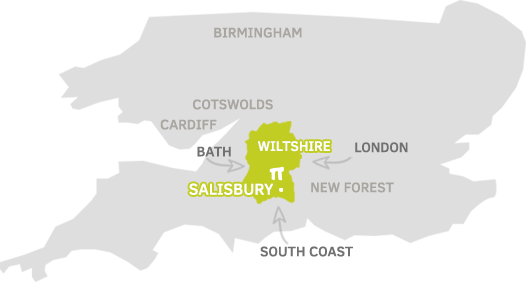Medieval Moments in Salisbury
- AMCL Schatz

- Jul 31, 2022
- 3 min read
Salisbury is a cathedral city in Wiltshire. Situated in southern England's rural heartland near the edge of the Salisbury Plain, its history dates back over 5,000 years. I had always wanted to see this place, so we booked a day trip from London. It took us about an hour and a half to get there from downtown.
Along the way, I enjoyed the countryside view and even nudged my husband from his bus nap (he always falls asleep on bus, train, plane, and car rides) to tell him about this peculiar feeling I was having. For the past few days, we had driven through various scenes like this in different parts of Western Europe but none had elicited this kind of nostalgic impression that I sensed as we traveled through the English countryside. It seemed strangely familiar even though it was my first time to visit this place. It even felt remarkably cozy comfortable, almost as if I had lived there before. My husband said in jest, “Oh, you mean, you had a past life here as an English country lass?” I replied, “No, I was thinking more like an English Royal!” He just looked at me and went back to sleep, but not before saying, "And I thought I was the one who's been dreaming."
True to what our guide had told us, Salisbury has retained much of its medieval character. Though considered a city, it is small, laid-back, and appears more rural. In some areas, one could be transported back in time by just staring at the numerous timbered buildings and Elizabethan, Edwardian, or Tudor historic houses and cottages with thatched roofs, that is, if one ignores the power lines crisscrossing the streets or the modern clothing and funky jewelry sold by the shops occupying some of these establishments.
The first place we visited was the Gothic Salisbury Cathedral known for its spire that rises 123 meters and is considered the tallest in England. This church used to be Catholic and was known as the Cathedral of the Blessed Virgin Mary, but since Henry VIII split from Rome, this has become one of the symbols of the Church of England.
We took pictures against the façade (under restoration at the time of our visit) before entering its original 13th-century doors. Inside are towering marble columns, a pulpit intricately-adorned with carvings of Biblical prophets, and the tomb of Lady Catherine Grey, sister of Lady Jane Grey, who was Queen of England for nine days. The church also houses the tombs of several other English Royals, bishops, and Parliamentarians.
Along the centre of the nave is a relatively newer structure – a font designed in the shape of a giant crucifix. It is filled to the brim with water and appears still, but actually flows continuously from all four sides which creates a magical effect. When one dips his fingers into the holy water and breaks the surface, one can see the reflection of his hands as well as the spire above.
The church also houses Europe’s oldest working clock dating back to 1386 and the Chapter House which contains one and the best preserved of the four surviving original copies of the Magna Carta, the foundation of the British Constitution.
In the eastern part of the cathedral is the Trinity Chapel where the Prisoners of Conscience Window was installed in the 1980s in honor of the victims of human rights abuses all over the world. On its surface are inset faces of people representing various faiths, surrounding the Amnesty International candle.
We bought some postcards and souvenirs at the adjoining gift shop and then went outside to see a little bit of The Close, the area that was separated from the cathedral grounds by a wall. We saw well-preserved quaint houses with lovely gardens filled with flowering bushes, narrow alleys, grassy lawns with benches, colourful shops, and interesting restaurants.
In the olden days, the population there was completely ecclesiastical, as the property was developed to serve the church. Nowadays, the buildings serve as private homes for the very wealthy. Some structures have remained public, but we didn’t visit them.
We were told that Salisbury is also known for its Farmers’ Market which opens every Tuesday and Saturday. It wasn’t market day when we were there, but the guide showed us the maze of narrow streets in the Old City Centre aptly named Ox Row, Fish Row, Oatmeal Row, Butchers’ Row, and the like, leading to the open-air shopping haven. This area has been a trading place since the Middle Ages and the tradition lives on. In fact, the buildings there, including some charming half-timbered structures, date back from the medieval times to the 19th century. It would have been cool to witness the market scene but this is something we would have to plan for a next visit.
Photo Credits:
visitwiltshire.co.uk, Anthony McCallum (Wikipedia and wyrdlight.com), archaelogy-travel.com, planetware.com, Knight Frank










































































































Comments